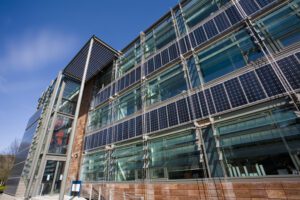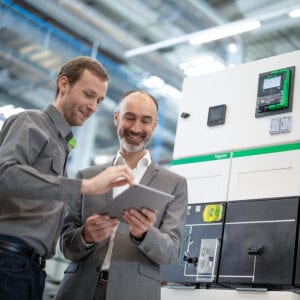As companies across the globe push to embrace sustainable energy models, they are adding solar generating assets to their facilities as a way of reducing fossil fuel consumption and carbon footprint. The increased deployment of renewable solar energy sources is acting as one of the key energy market drivers. According to the analyst firm MarketsandMarkets, the global microgrid market is projected to grow from US$24.6 billion in 2021 to US$42.3 billion by 2026.
However, as we have learned from the recent wave of natural disasters, solar panels, operating on their own, provide no level of business resilience. If the solar power system is grid-tied, and no local energy storage mechanism is in place, the solar energy cannot be used to power the home or the business during a power outage. the solar system will intentionally shut off for safety reasons. This lack of business resilience presents huge economic risks. The Department of Energy (DoE) recently estimated that outages are costing the U.S. economy $150B annually.

Many of those who invest in solar energy generating assets assume that resilience to any power failure situation comes as part of the package. However, that is only true if the investment addresses a microgrid approach that includes not only solar generating assets but also an accompanying set of microgrid controls, and a battery energy storage system (BESS) that permits ongoing operation. This means that if a Fortune 500 company based on the east coast of the United States signs a 10-year power purchase agreement with a solar farm located in Arizona, then although it gives the client access to a sustainable supply of energy, it doesn’t keep their plant in New Jersey online during a storm. For enhanced resilience, renewables need to be local, and they need to be tied into a microgrid.
Considerations for establishing a resilient microgrid
We at AZZO, a Schneider Electric Master-level Critical Power EcoXpert, witness many of these power outage-related business continuity issues in the field. Among our customers, we see a growing realization that sustainability and resilience are tied together. The good news is that across plants and commercial enterprises, police stations, firehouses, office buildings, hospitals, and schools, appropriate controls, and new energy storage technologies, allow solar-generated energy to be used when the utility grid is disconnected, without having to use high CO2 output fossil fuel-fired generators as a bridge.
Here are some tips to consider when configuring resilient microgrids.
-
Resilient microgrid tip #1: Load analysis
During the microgrid design phase, the expected load consumption and the nature of that consumption (peaks and valleys) needs to be established and analyzed. We typically analyze a year’s worth of historical data and gather live 15-minute interval energy consumption data to determine an energy consumption baseline. We then work with the building engineering and facilities staff to determine how much square footage of land, roof, or carport will be required to accommodate the number of solar panels needed to address the facility’s energy capacity needs.
-
Resilient microgrid tip #2: Battery selection
We also help clients to determine the battery type and quantity needed to maintain operations during periods when power is either out or not being generated. Batteries can differ in their chemistries, and this impacts how they behave during energy transfer situations. Some battery chemistries are better at delivering power over a longer period, whereas others are quite effective in delivering a substantial quantity of power over a short time interval. Understanding these nuances is important to determine which mix of batteries is optimal for addressing the energy storage requirements of each project.
-
Resilient microgrid tip #3: Integration of controls
The microgrid control system acts as the resilience central nervous system. Without properly configured controls, nothing will work. That’s why it’s vitally important to have a tested, documented, validated architecture with technology that works and can be proven to work over a long period of time. During the microgrid control system evaluation phase, it is critical to perform due diligence in the areas of both cybersecurity and networking.
For more information about microgrids
The marriage of sustainability and resilience is all about deploying a microgrid that is designed to capture the solar energy when it’s available and to hold it until it needs to be used. Working with our partner Schneider Electric, AZZO provides turnkey control systems for microgrids. Our solutions consist of control design ̶ involving the proper sequence of operations when transferring from one power source to another ̶ and the provision of the required control componentry.
To learn more about how to avoid unnecessary power outage-related costs and risks, access the Schneider Electric web pages.
 |
Schneider Electric has been recognized as the world’s most sustainable corporation in 2021 by Corporate Knights Global 100 Index. |
EcoXperts are the Enablers of Buildings of the Future
The EcoXpert Partner Program is unique in its industry and made up of a best-in-class global ecosystem of expertise. Trained and certified by Schneider Electric, EcoXperts are the implementation arms of EcoStruxure and Wiser all over the world.
Buildings of the Future is about delivering solutions for the sustainable, resilient, hyper-efficient, and people-centric buildings that our customers need. For our EcoXpert partners, this unveils immense growth opportunities through the transition to end-to-end portfolio sales that will resolve our customers’ most critical needs. For our shared customers, this means that together with our EcoXpert partners, we will drive the building industry transformation and help our customers survive and thrive today – and tomorrow.
Visit EcoXpert to learn more. Discover Buildings of the Future.



